
Rubic is a decentralized instant Crypto Exchange that aggregates over 200 DEXs, offering users the best crypto rates and seamless cross-chain swaps across 80+ networks, including Non-EVM chains. This case study explores Rubic’s client requirements, innovative features, robust security measures, and successful market positioning, demonstrating its leadership in the Decentralized Exchange space.
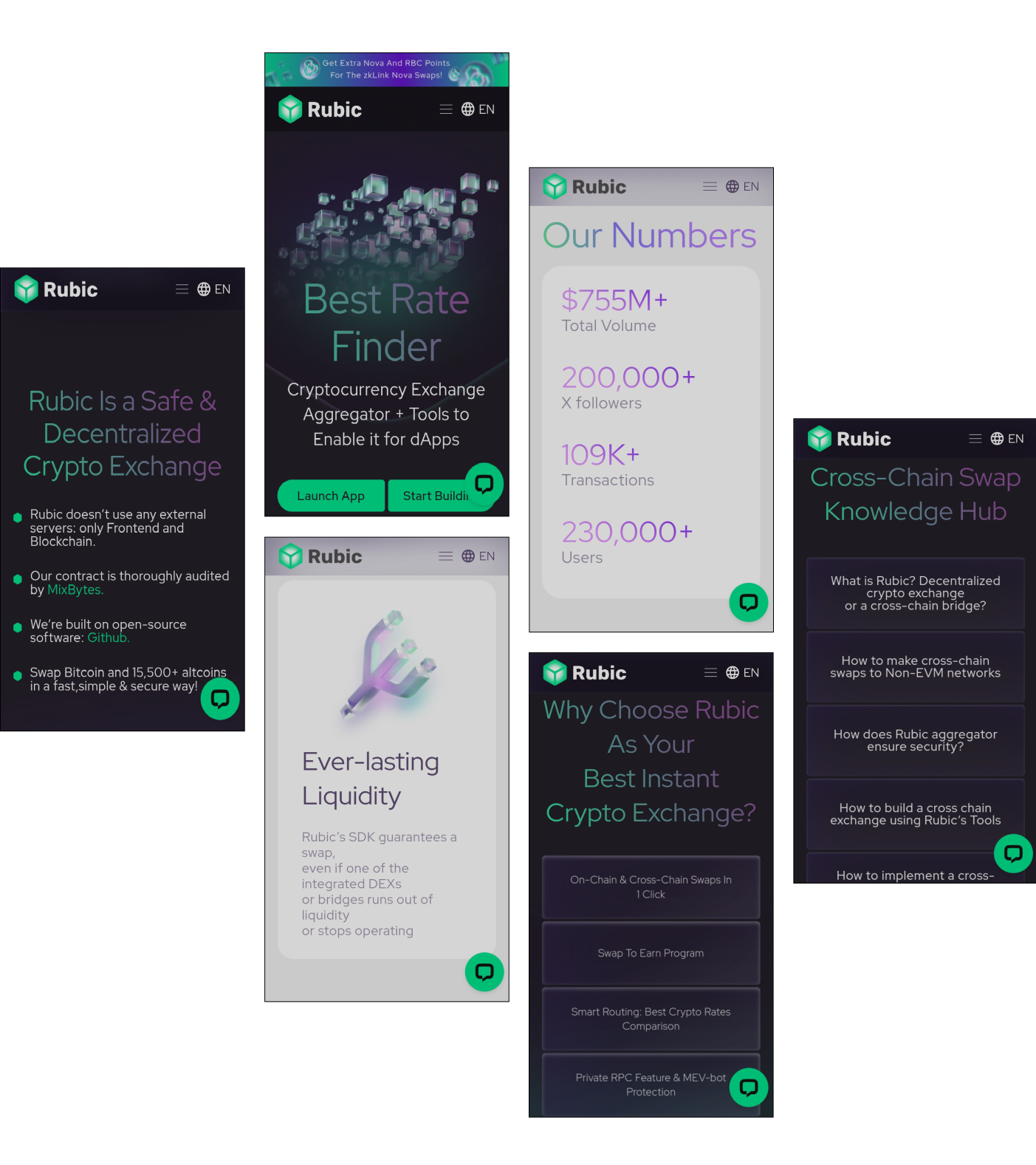
Rubic required a platform that could provide users with the best crypto rates through an efficient aggregation of over 200 decentralized exchanges (DEXs). It needed to enable seamless cross-chain swaps across 80+ networks, including Non-EVM chains, ensuring users could trade tokens effortlessly across different blockchains. The interface had to be user-friendly, facilitating one-click swaps and simplifying the overall trading process. High security was paramount, necessitating rigorous audits and the inclusion of protective features such as Private RPC and MEV-bot protection. Additionally, Rubic sought to optimize trading by aggregating superior liquidity from various sources, enhancing user experience and engagement.
Rubic aimed to integrate seamlessly with popular wallets like MetaMask to provide users with easy access and convenience. The platform needed to support unlimited transactions without imposing any limits, ensuring that users could trade as much as they wanted. Additionally, Rubic sought to implement a rewards program, the Swap to Earn program, to incentivize users by offering RBC points for their swaps, thereby encouraging active trading and increasing user engagement. By combining these elements, Rubic intended to create a robust, secure, and user-friendly platform that stands out in the competitive landscape of decentralized exchanges.
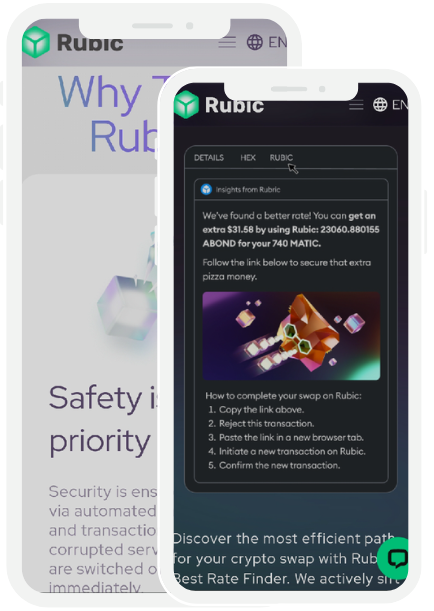
Rubic’s Smart Routing compares 200+ DEXs in real time to secure the best rates. It minimizes slippage and boosts efficiency using advanced algorithms, helping traders make profitable, informed decisions with fast and optimal crypto trading routes across networks.
Rubic allows seamless cross-chain swaps across 80+ blockchains, including Non-EVM chains. Users can trade tokens across networks without switching platforms or wallets, boosting liquidity, accessibility, and trading diversity—all in one unified and convenient trading interface.
Rubic protects trades using Private RPCs and MEV-bot protection. This prevents front-running and transaction manipulation. Enhanced security ensures fair execution, builds user trust, and provides a safe, transparent trading environment without exposing sensitive transaction data publicly.
Rubic removes transaction limits, enabling users to trade any volume freely. This is ideal for institutional and frequent traders, offering flexibility for small or large trades without restrictions. It supports diverse strategies and seamless trading experiences on one platform.
Rubic integrates directly with MetaMask, allowing users to trade and manage crypto within the wallet. This simplifies swaps, enhances security, and enables smooth dApp interaction. Users benefit from a familiar interface with secure, efficient access to Rubic’s trading tools.
Users earn RBC points for every swap through Rubic’s Swap to Earn program. This incentivizes trading and builds loyalty by rewarding activity. Points may unlock platform benefits, encouraging engagement, retention, and higher trading volume across the ecosystem.
Rubic aggregates liquidity from 200+ DEXs and bridges to ensure optimal execution. This reduces slippage and supports large-volume trades with better prices. Users benefit from smooth, efficient, and scalable trading powered by real-time liquidity sourcing and smart execution.
Rubic prioritizes user protection with regular audits and advanced security like Private RPC and MEV-bot safeguards. These features secure funds and data from exploits. Trusted by users, Rubic maintains safety against evolving threats in decentralized crypto trading.
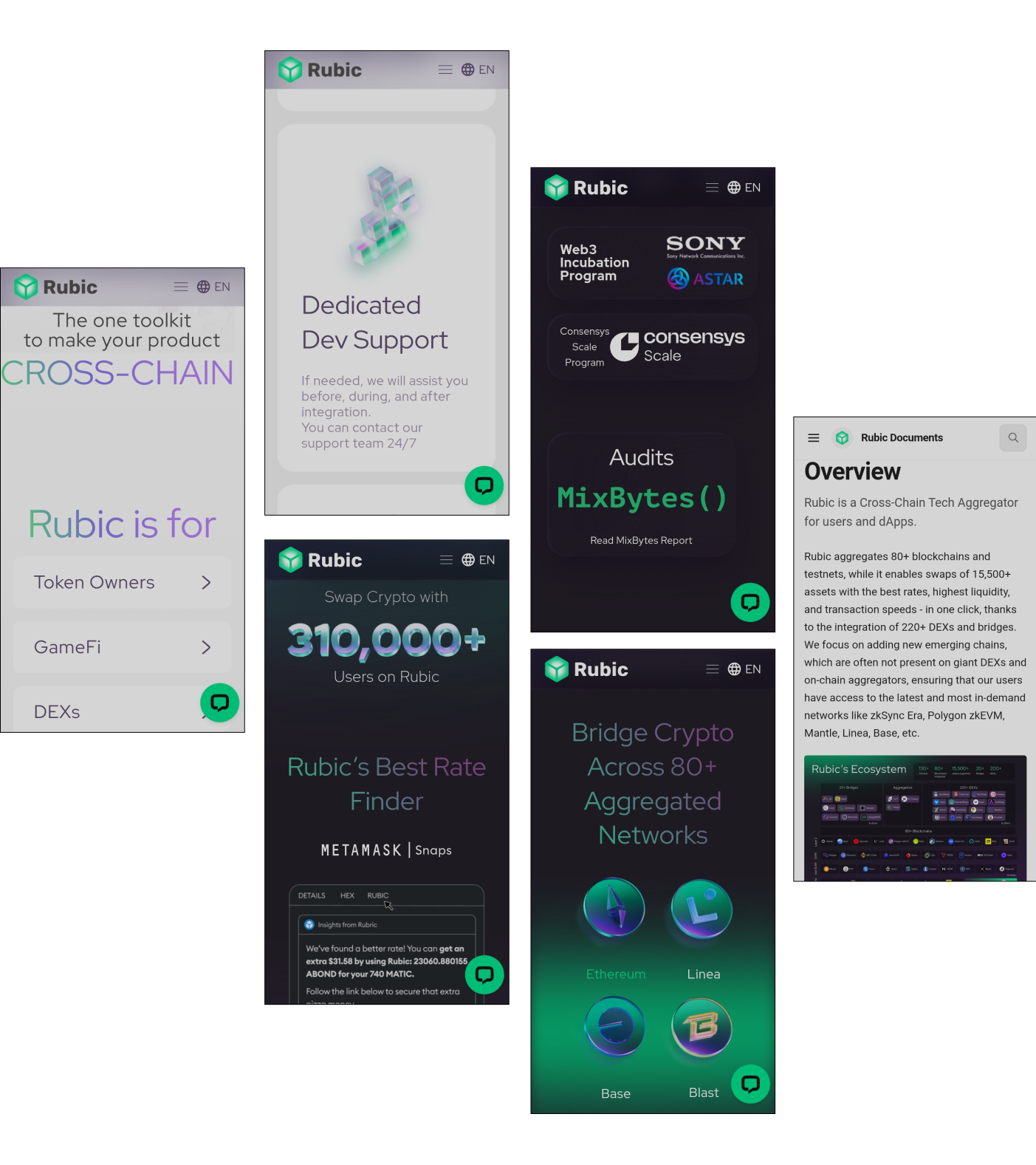
PoS selects validators based on staked coins, not computing power. It’s energy-efficient and secure, rewarding honest participants. Popular for modern blockchains, PoS enhances scalability and sustainability, offering a greener alternative to traditional Proof of Work systems.
PBFT reaches consensus through message exchanges, tolerating faulty or malicious nodes. Ideal for permissioned blockchains, it offers fast finality and high efficiency. PBFT ensures reliable performance, enhancing security where participants are known and trust is essential.
PoW requires miners to solve complex puzzles using computational power, ensuring network security. It’s energy-intensive but highly secure, used by Bitcoin and others. Miners are rewarded for maintaining integrity, making PoW a reliable, decentralized consensus model.
PoA relies on trusted validators with verified identities to validate transactions. It offers low latency and high throughput, making it ideal for private or enterprise blockchains. PoA prioritizes performance while balancing decentralization in controlled environments.
PoB requires users to burn tokens—sending them to an unusable address—to gain validation rights. This reduces supply and secures the network. By incurring a cost, participants show long-term commitment, aligning incentives for network security and scarcity.
DPoS lets token holders vote for delegates to validate blocks. This improves speed and scalability by limiting consensus participants. Delegates are accountable to voters, combining decentralization with efficiency. Ideal for scalable, high-performance blockchain networks.
PoH timestamps events cryptographically to establish order before consensus. It enhances throughput and scalability by enabling faster agreement on transaction sequences. Often paired with PoS, PoH is ideal for high-speed blockchains like Solana requiring fast and secure data flow.
PoC, or Proof of Space, uses hard drive storage for mining instead of computation. More storage means better mining chances. It’s energy-efficient, cost-effective, and eco-friendly, promoting broader accessibility and decentralization in blockchain participation.

Aa Bb Cc Dd Ee Ff Gg Hh Ii Jj Kk Ll Mm Nn Oo Pp Qq Rr Ss Tt Uu Vv Ww Xx Yy Zz
The approach for Rubic involved several strategic steps to ensure a robust and user-friendly platform. Initially, the team conducted extensive market research to understand the needs of crypto traders and identify gaps in existing decentralized exchanges. With these insights, they designed a platform focused on seamless cross-chain swaps, high security, and user convenience. The development process included integrating over 200 DEXs and 80+ blockchain networks, ensuring comprehensive coverage for users. Rigorous testing and multiple security audits were performed to guarantee the platform’s reliability and safety. The project also prioritized user experience by incorporating features like Smart Routing, which optimizes trading routes for the best rates, and a user-friendly interface compatible with MetaMask. The Swap to Earn program was introduced to incentivize users and boost engagement.
The implementation of Rubic resulted in significant achievements, making it a standout platform in the decentralized exchange space. Users benefited from the ability to perform seamless cross-chain swaps across 80+ networks, enhancing their trading experience and expanding their options. The Smart Routing feature proved to be highly effective, consistently providing users with the best crypto rates by comparing prices across multiple DEXs. The integration with MetaMask further simplified the trading process, attracting a wide range of users, from beginners to seasoned traders. Security measures such as rigorous audits, robust features like Private RPC, and MEV-bot protection solidified Rubic’s reputation as a trusted platform, safeguarding user funds and data.
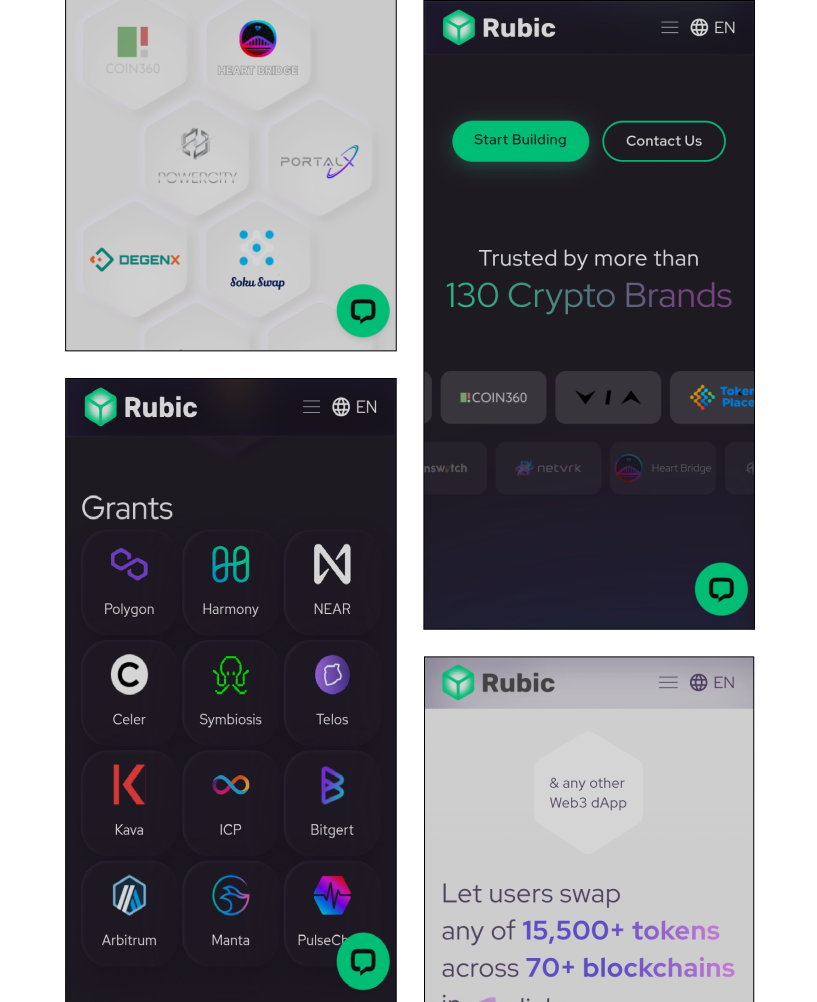
One of the primary challenges faced by Rubic was managing the technical complexity inherent in integrating over 200 decentralized exchanges (DEXs) and supporting 80+ blockchain networks. Ensuring seamless cross-chain compatibility required extensive development and testing to guarantee smooth functionality and secure transactions.
Ensuring the security of user funds and data presented another critical challenge for Rubic. Despite implementing stringent security measures such as Private RPC and MEV-bot protection, the platform faced ongoing threats from sophisticated cyber attacks targeting decentralized exchanges. Maintaining resilience against potential vulnerabilities and protecting against emerging threats required continuous monitoring, proactive risk management strategies, and regular security audits.
Driving user adoption and educating the community about the benefits and functionalities of decentralized exchanges posed a significant challenge for Rubic. Overcoming traditional barriers and building trust in a decentralized ecosystem required targeted marketing efforts, user-friendly interfaces, and educational resources. Simplifying the onboarding process for new users and addressing misconceptions about decentralized finance (DeFi) involved strategic communication and engagement initiatives.
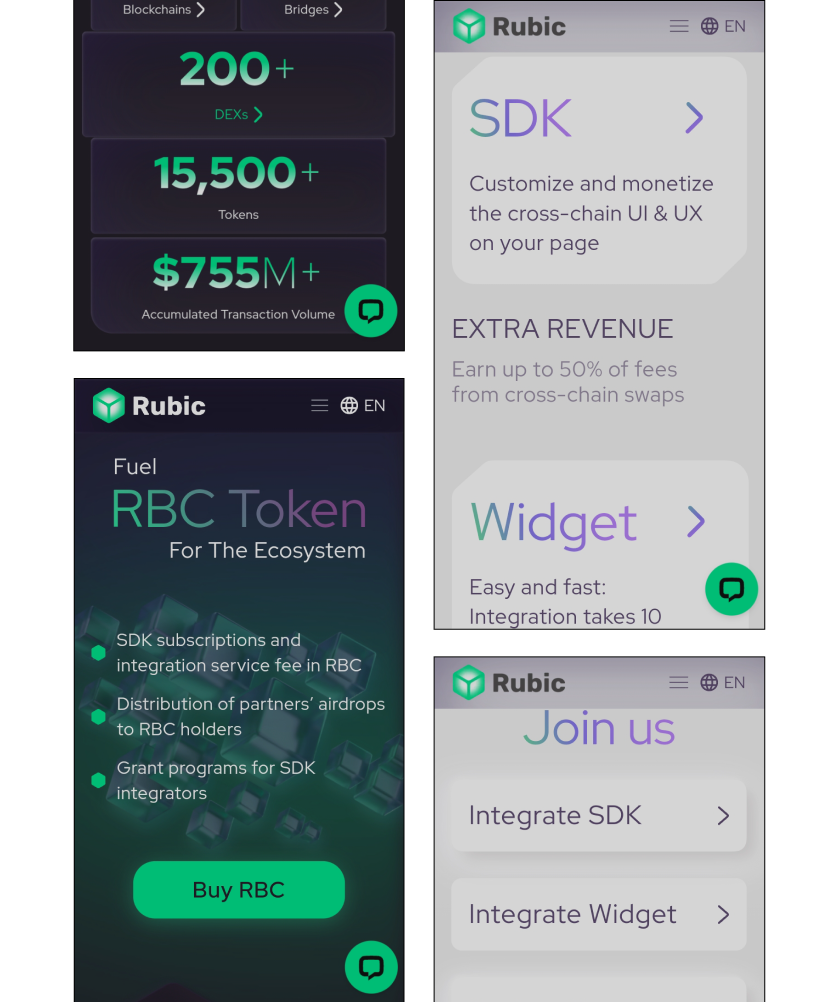
Rubic Exchange a Decentralized platform for seamless crypto trading across multiple networks.